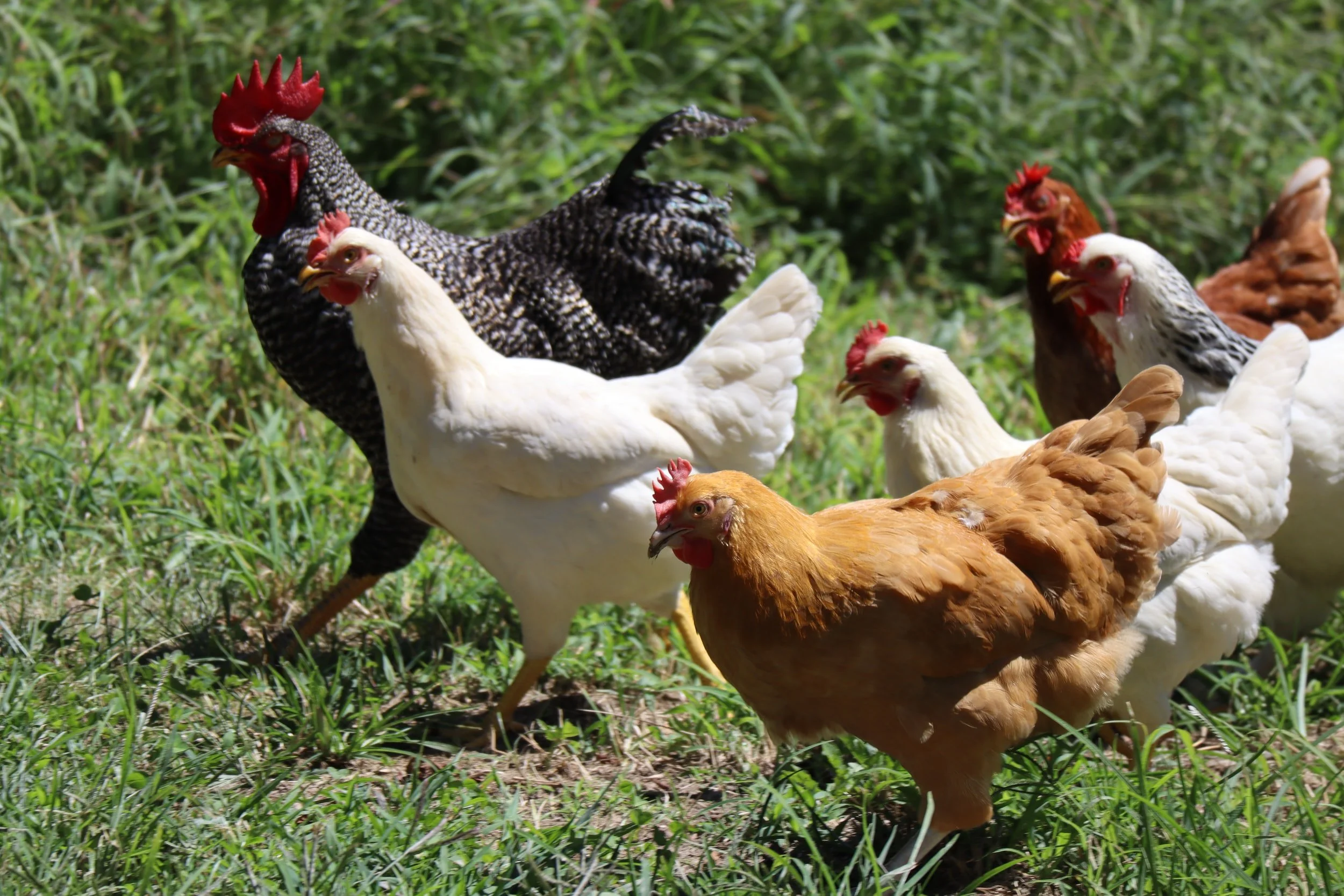The Scoop on Coops
Let me give you the 'scoop on coops' - how to make a chicken friendly chook house.
If you prefer, you can buy chicken coops from produce agencies around town. Some are wooden cages and others are metal, A-framed coops.
If you are making your own, you can choose between two basic types.
One is a deep litter system and the other is a cage enclosure. A deep litter system is based on a cage being at ground level, usually on concrete and a deep layer of sawdust, shavings or hay that is cleaned out now and then. The litter absorbs the bird's manure and you can use the mix of manure and sawdust as garden compost.
A cage unit is usually an elevated cage with a mesh floor through which the birds' manure drops to the ground. While both are suitable for backyard chooks, to me, the deep litter system provides a better lifestyle as it gives a better opportunity for the chooks to scratch and explore.
You can provide an outside run, but as the chickens will scratch the dirt continuously, outside runs soon become devoid of vegetation and then become muddy, wet and unsightly.
If your yard is big enough and your other pets are chook friendly, then allowing your feathered friends to range freely during the day will make for content chooks. They will explore, scratch and cluck contentedly - but it can be a challenge finding their eggs when they start to lay!
The evils for your birds are adverse weather conditions and predators. Your chookery should provide protection from each.
Position the enclosure so that the morning sun will warm it but not so that the chickens will be cooked in the afternoon. If you can place it so that shady trees or other structures provide protection on the west side, this should prevent problems from the afternoon sun.
The size of the enclosure should provide half a square metre of floor space per bird at a minimum, but the bigger it is, the more fun your chooks will have.
The coop should have adequate ventilation plus a draft-free area for nesting. Having a chicken mesh front and a partly enclosed back portion with solid side walls is a good combination. To make the coop hygienic and easy to clean, the walls are best made from a non-porous material such as fibro sheeting, marine ply or metal. However, metal sheeting does not provide protection from the heat.
Ensure that the door is big enough to allow easy cleaning of the pen. The floor should slope towards the door to allow drainage and to make the cleaning of the coop easy.
Chickens seem to enjoy roosts and perches. Allow at least 200mm of perch length per chicken. Make the perches from timber roughly 75mm x 50mm in dimensions and place them about 500mm from the floor. Ensure that the perches are not placed above the food or water containers as the containers will become contaminated with chook poop.
They will need nest boxes, too. Mount these on the cooler (southern) side of the enclosure and place them about 600mm from the ground. Provide one nesting box per four to five hens. Nesting boxes should be about 300mm square. It is ideal if you can provide a hinged opening outside the coop, behind the nesting boxes, so that you can retrieve the eggs without disturbing your chooks.
Food and water containers should be placed above the ground level at about the height of the chickens' backs. An automatic waterer is ideal and, for a small number of chickens, you can make your own.
I have used a plastic 2 litre milk bottle with an opening cut into it about 2mm from the bottom. I have cut the top off this bottle and inside it I have placed an upturned soft drink bottle with a few holes 2 mm from the neck of the bottle. I fill the soft drink bottle with water and when I place it upside down, inside the milk carton, the water leaks out to the level of the opening. It is a bit unstable, but I secure it with a wire cradle. Fluffy seems to approve!
By Dr Cam Day BVSc - Last updated 8 October 2014

